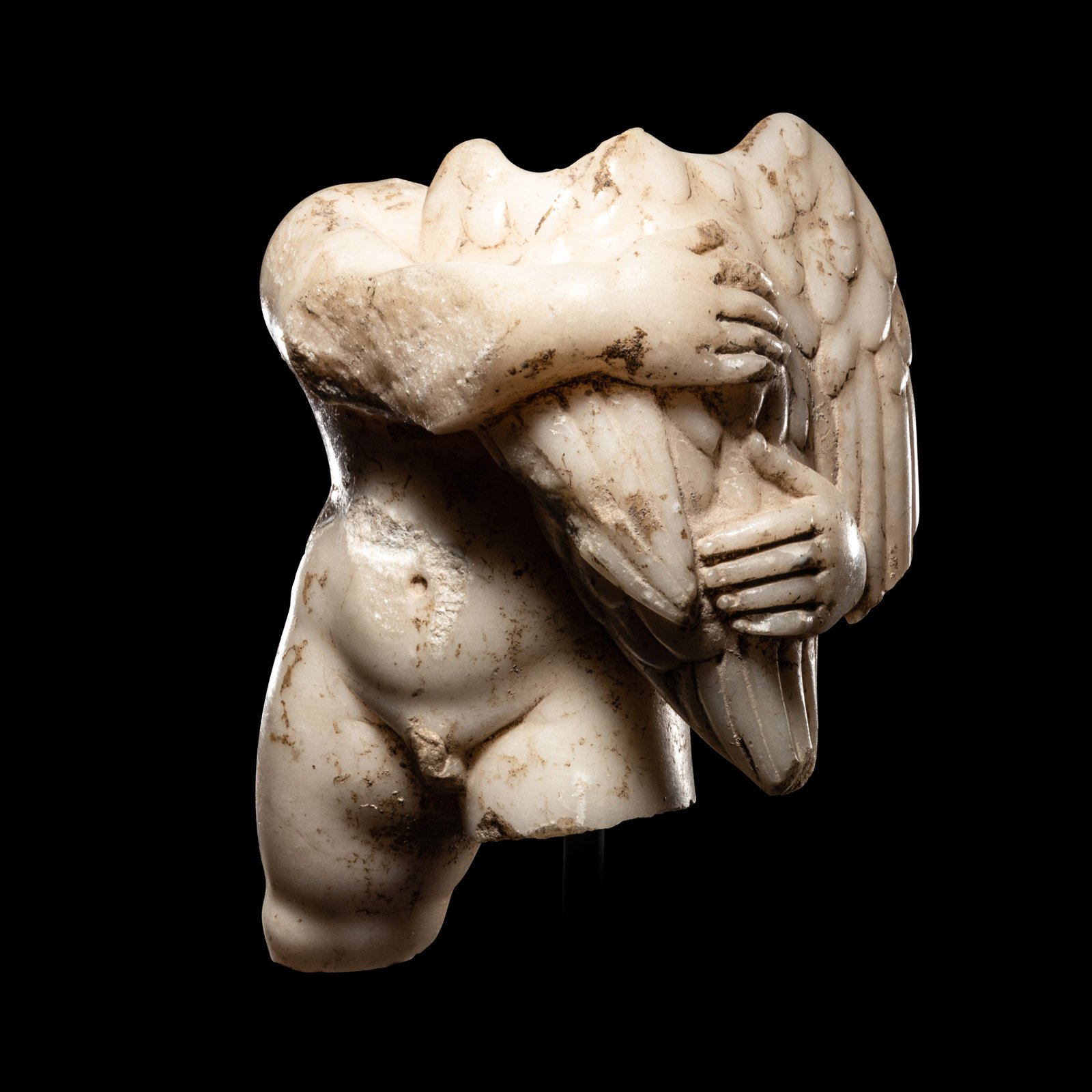Ancient Roman Mold-Blown Glass Ornithological Flask



Ancient Roman Mold-Blown Glass Ornithological Flask
Roman, second quarter of the 1st century A.D.
Opaque white glass
H: 8.1 cm (3.1 in)
Serial: 11271
Provenance: Bonhams, Antiquities, 13 April 2000, lot 73.
Glass making technique in antiquity originated in the second millennium B. C. in Egypt and Mesopotamia and progressed from core-molding to mold-pressing and glass-cutting, subsequently to free-blowing and mold-blowing. With a versatility like no other known material in Roman times, abundant availability, lightness and ease of use, glass enabled the imitation of a wide range of other materials (especially precious metals or stones), whether in the form, the design or the color. Furthermore, the ancients certainly knew that glass is a chemically neutral substance, what makes it particularly suitable for the storage of food, but also of cosmetics or pharmaceutical products.
The replacement of terracotta by glass as a raw material for the manufacture of all types of containers is to be regarded as a major technological revolution in the Classical world: this shift, which occurred gradually between the late Hellenistic period and the first centuries of the Imperial times, was facilitated by the invention - probably in the Levantine - and widespread use of the blowpipe and of furnaces able to resist the temperatures needed for the melting of sands (transparent glass).
This particular vessel of opaque white glass is shaped as a small flask, with low foot ring, body hexagonal composed of gabled panels separated by vertical ribs, cylindrical neck with flaring rim turned in. A pattern of downturned palmettes or petals decorate the shoulder; the ovolo kymation and twenty-seven ribs are placed below the body. Made in the mold-blown technique the body received a decoration in low relief, which represents the ornithological scenes: birds flying over or resting on nests. As some of the nests resemble pots, it has been suggested that there were special pots placed on the houses to facilitate nesting. This flask was probably used as a storage vessel for a perfumed oil. The production of similar glass vessels was assigned to Sidonian workshops.
COMPARANDA
The Constable-Maxwell Collection of Ancient Glass, Sotheby Parke Bernet, 4th-5th June, 1979, pp. 64-65, no. 99.








